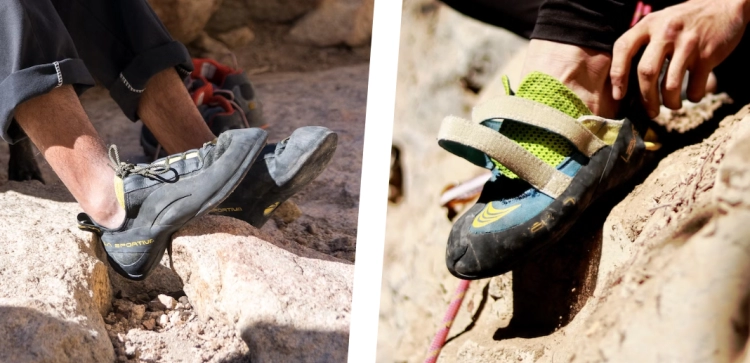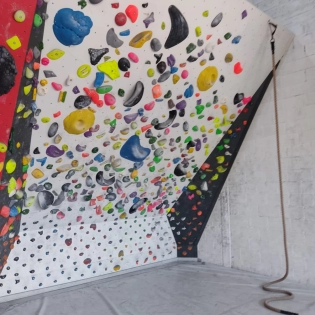
I don't have any lace climbing shoes, but so far I know quite a few people who have Velcro shoes that have torn and the Velcro strap is no longer attached. My shoes are actually very close to tearing it seems as well.
I have never seen anyone whose lace shoes have torn though, but I'm sure it happens, I just don't know at what rate compared to Velcro shoes.

There may be some brands that have similar sizing, most likely by chance, but overall brands can have very different sizing to their shoes. Even different shoes from the same brand tend to have different sizing.

I believe he said in one of his recent videos, or just in a video he was in, that he downsizes his shoes a few sizes less than he used to a few years ago. I can't remember the reason why he said he does it.

I would say you should always try them on and see what works for you. The same principles apply to choosing neutral climbing shoes as they do to choosing aggressive climbing shoes - try them on and feel what feels best for you.
I would keep in mind the intended usage of the shoes though, since if you are getting neutral shoes, you may be climbing longer routes such as in sport and trad climbing, in which case, downsizing to something very tight may feel very painful and uncomfortable due to wearing the shoes for so long.

For me the fit of climbing shoes has always been the same based on the shoes. I haven't changed my shoe size since I started climbing a few years ago, even when I try on shoes I already have, like the Evolv Shaman 2, I still find that the best fit is the same size I got when I first bought them a few years ago.
I don't really think there is a general best length. For me personally, I cut them just enough to not be too short, but don't leave enough to hear the nails on the wall. If they are even a little bit longer than that, they tend to sometimes get bent backwards while grabbing the holds, which obviously is not very pleasant.
Slightly, but not too much! Though, many climbers may say its just a matter of how comfortable you are with curled toes. If its not painful and it doesnt negatively impact performance, maybe its ok.
Honestly, getting the right size and just wearing them will really get the job done.
If your shoes are just not the right size though, then it maybe either not get better, or it may be a very long process. Not being the right size also includes shoes that are too big, so keep that in mind.
One thing I like to do is to bend then around and scrunch them up before putting them on. I do this for about a minute and it really helps soften then up and makes them much less painful.
There isnt a rule that says you need one, but, if you are going to use chalk then I would say yes, you do.
You could put your chalk in plastic containers like many new climbers do, but this is really not efficient, and its very easy for the chalk to spill and get knocked over.
Flexibility in my opinion is extremely underrated. I think being flexible can be one of the greatest tools in climbing.
I myself am not flexible at all, but my friends are, and the difference between how we climb is so noticeable. Moves that are so difficult for me are just easy to them.
You dont have to be flexible to climb, but, it would make a huge difference if you were.



